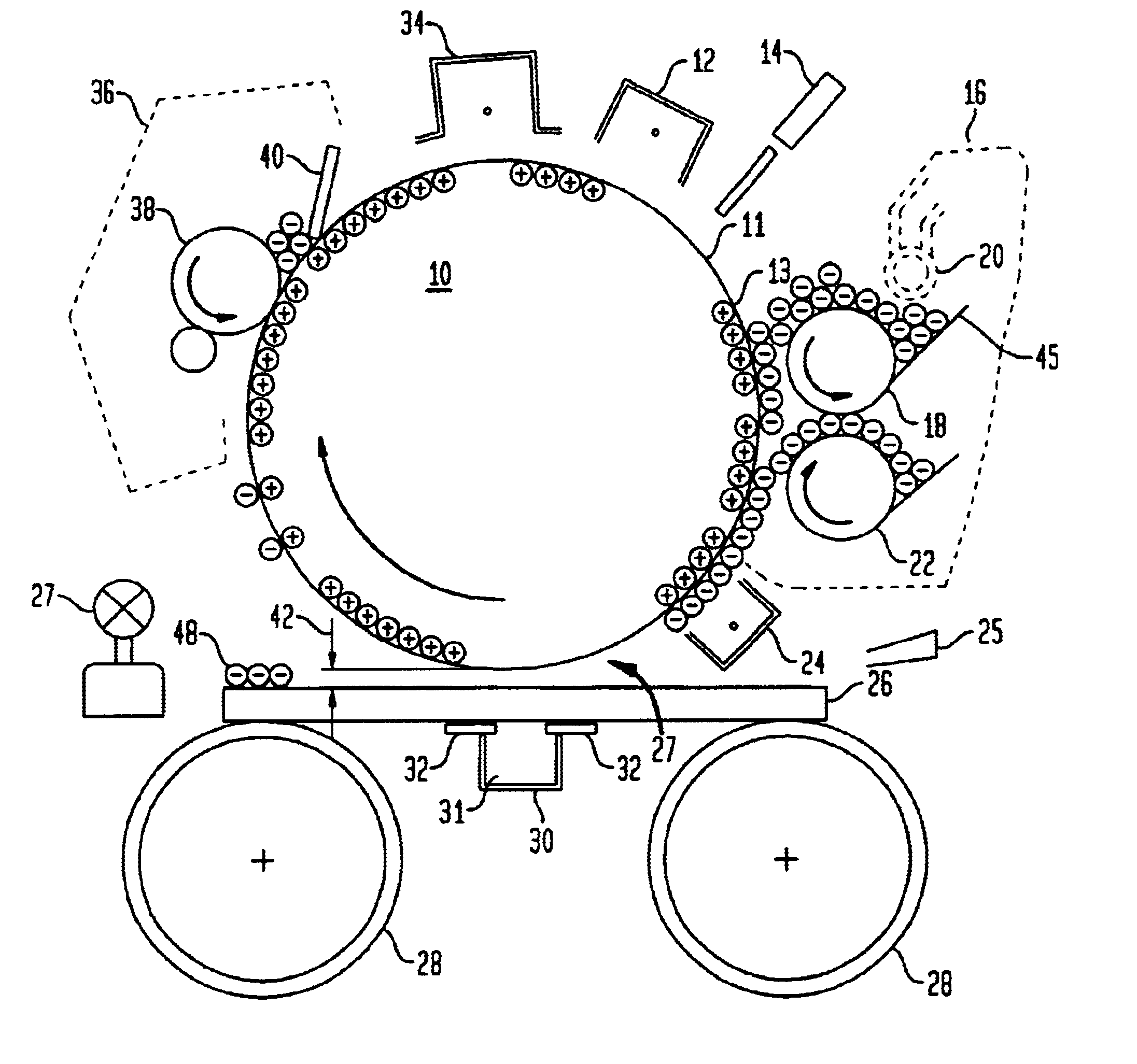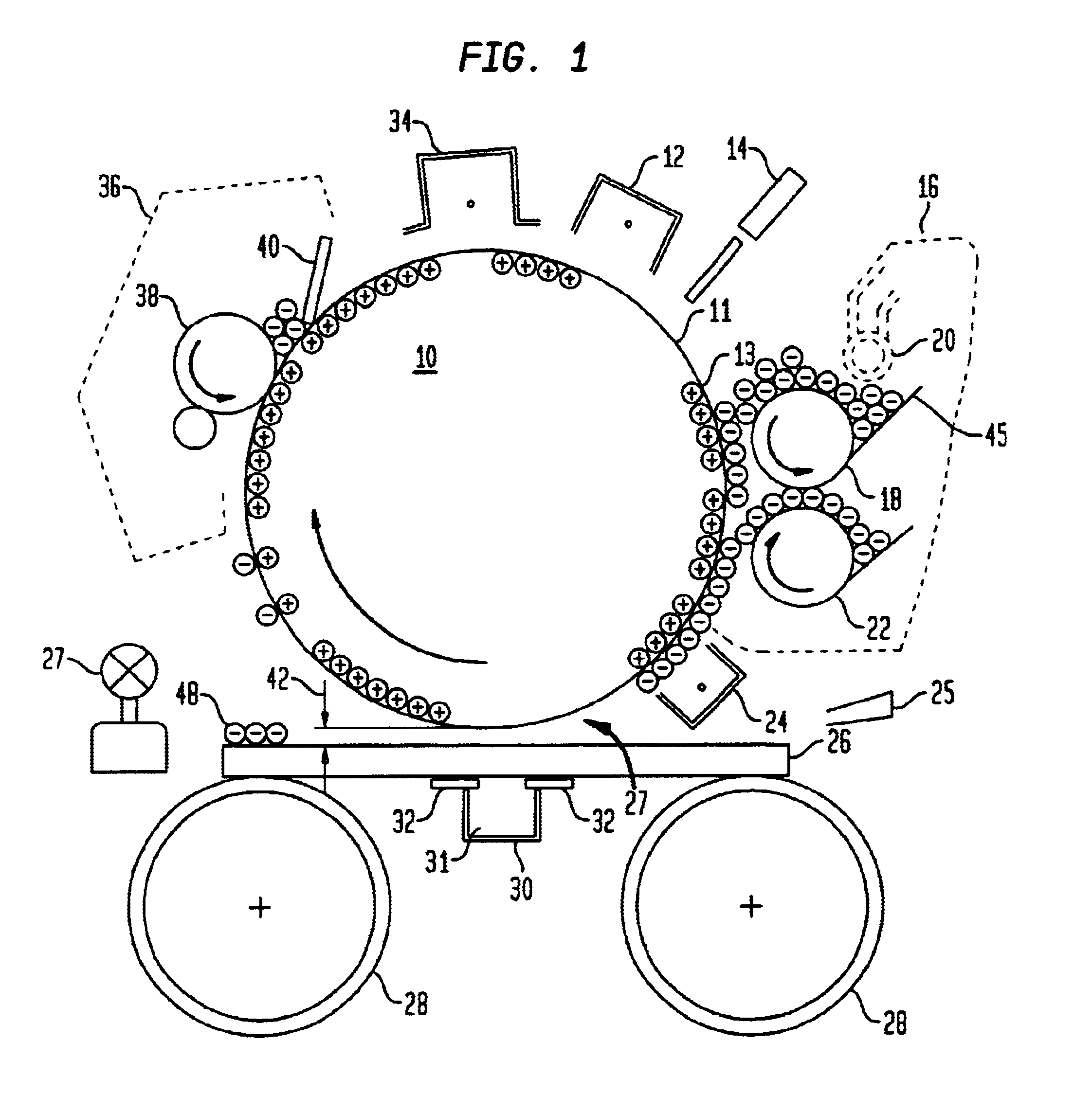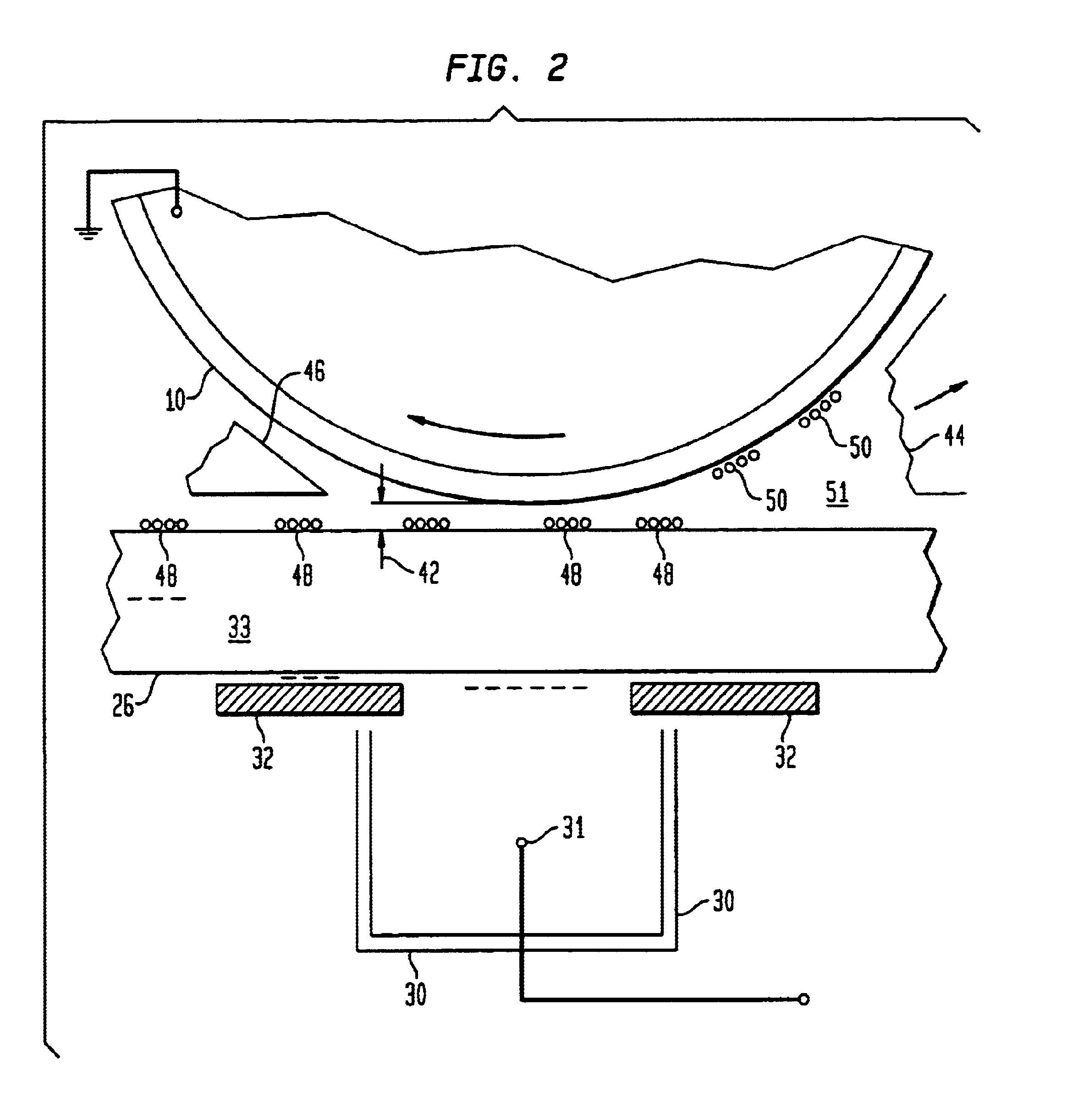Electrostatic printing of functional toner materials for electronic manufacturing applications
a technology of functional toner and electrostatic printing, which is applied in the field of electrostatic printing of functional materials, can solve the problems of small display (10.4 inch diagonal) for lap top computers, and high and achieves the effect of reducing the cost of modern amlcd production facilities and reducing the cost of production
- Summary
- Abstract
- Description
- Claims
- Application Information
AI Technical Summary
Problems solved by technology
Method used
Image
Examples
second alternate embodiment
FIG. 12 shows a cross section of the cathode plate 200 of an AC Plasma Color Display Panel. It consists of a glass back plate 201 with black glass spacer ribs 202 that optically and electrically isolated image cells from one another. These ribs are typically 100.mu. high and 30.mu. to 40.mu. in nominal width. At the bottom of the "wells" are the address electrode lines of copper 204 or nickel metal. Covering the walls and bottom of the "canyons" is the phosphor 206 that converts the UV radiation from the plasma discharge to visible radiation, RG&B in the case of a color display. Alternate canyons are coated with red, then green then blue phosphor.
One advantage of the electrostatic printing technique is the non-contact or gap transfer aspect of it; i.e. the ability to transfer functional materials across relatively large mechanical gaps.
FIG. 13 is a greatly magnified picture of the mechanical gap 220 between the print drum and glass surface 200 of the invention. The gap here is set t...
third alternative embodiment
An alternate method to produce conductors is to print metal toners themselves, to bum off the resin that coats the metal particles; then reflow the metal into a smooth conductor pattern. Using the invention of the preferred embodiment one prints an aluminum toner onto the glass. The toner is then dried to temporarily fix it for reasons of safe handling. Now a rapid thermal processing of the metal is effected, where the toner and glass is raised to a temperature of 50.degree. to 100.degree. C. below the softening point of the glass (approximately 500.degree. C. for soda lime glass). This effectively bums off the resin that coats the metallic particles. Now with an intense UV light source, the aluminum is heated to its melting point while the glass absorbs little UV energy. Aluminum which melts at 659.degree. C. is a good choice of materials to be used with soda lime glass. Note this is not done in air but in a "reducing" atmosphere like one used in aluminum welding work.
fourth alternate embodiment
In this embodiment the glass 300 in FIG. 14a is first coated with a thin, transparent layer 301 that is electrically conductive. This very thin layer is not shown. Indium Tin Oxide (ITO) is a possibility except it absorbs about 5 to 10% of the transmitted light and ITO processing is expensive, of the order of $5 per square foot. The ITO conductivity of 50 to 100 ohms per square for a typical 2.mu. thick layer is higher than needed for this electrostatic process. A conducting polymer as resistive as 10.sup.+5 ohms per square is adequate for this electrostatic process, all that is needed is to establish an electrostatic ground plane 302 as shown in FIG. 14a.
In this case the coated glass 300 is imaged with the RGB color mosaics 304 which are then reflowed by final heating. The plate is now complete except for the black intermatrix which has yet to be produced. Transparent conductive layer is electrically grounded through edge contact 306 as shown in FIG. 14a. Now the entire plate is co...
PUM
 Login to View More
Login to View More Abstract
Description
Claims
Application Information
 Login to View More
Login to View More - R&D
- Intellectual Property
- Life Sciences
- Materials
- Tech Scout
- Unparalleled Data Quality
- Higher Quality Content
- 60% Fewer Hallucinations
Browse by: Latest US Patents, China's latest patents, Technical Efficacy Thesaurus, Application Domain, Technology Topic, Popular Technical Reports.
© 2025 PatSnap. All rights reserved.Legal|Privacy policy|Modern Slavery Act Transparency Statement|Sitemap|About US| Contact US: help@patsnap.com



